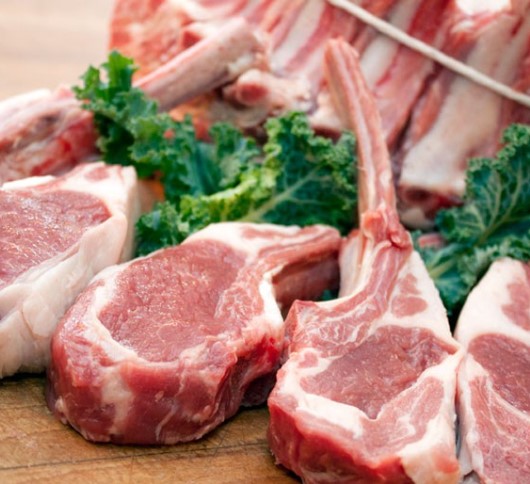Consumer price index in Brest region is one of the lowest in the country

March 28, Brest. The consumer price index (CPI) in the Brest region is one of the lowest in the country. This was announced at a meeting of the regional executive committee by the HEAD of the main department of trade and services Valery Matskevich, BelTA has learned.
The meeting considered the price situation and commodity supply of the region's consumer market. it was noted that the joint work of the trade regulatory bodies of the regional executive committee, city district executive committees and MART made it possible to ensure stability in the consumer market of the Brest region both in 2022 and at present. The share of domestic goods in the structure of sales at the end of last year increased to 66.5% (against the republican indicator of 60.9%)."The introduction of strict price regulation in the republic ensured a decrease in the consumer price index by the end of 2022. In the region, it amounted to 113.5% and was the highest in the republic. This year, the head of state set the task of preventing inflation from rising above 7-8%. CPI in January-February it amounted to 101.8% in the region. It is one of the lowest among the regions and below the national level (102%)," said Valery Matskevich.
Tobacco products, fruit and vegetable products and alcoholic beverages rose most noticeably. To a lesser extent, there was an increase in prices for MILK and dairy products, fish, and bakery products. A significant reduction in prices was recorded for tea and coffee.
“It is important to note that milk and MEAT products, fish, bread and clothing, i.e., those positions, the change in prices for which causes particular concern of the population, left the list of the 10 most expensive goods. At the same time, imported apples, grapes, bananas, tomatoes," said the head of the main department of trade.
This year, the prices for services have had a significant impact on the CPI - they have more than doubled since December. In this regard, interested structures were instructed to analyze the reason for the rise in prices and take measures to contain them.
To prevent a significant increase in prices in the region, there is a system of coordination with the commission on pricing issues. From October last year to March 24 this year, the regional executive committee received 191 applications from manufacturers. At the same time, various monitoring and inspections of retail chains still reveal facts of violations of pricing requirements.
The participants of the meeting also discussed the situation with stabilization funds: a low selection of fruit and vegetable products was stated. Experts explain this, among other things, by the fact that in the wake of last year's excitement, on the instructions of MART, more products were pledged to the funds than necessary to provide the domestic market during the off-season. As practice shows, consumer demand for potatoes in the region is 2.4-2.8 thousand tons (more than 6 thousand tons are pledged), for cabbage - 2.2-2.5 thousand tons (3.5 thousand tons ), for onions - 1.4-1.6 thousand tons (1.9 thousand tons), for table beet - 570-630 tons (921 tons), for apples - 2.8-3.2 thousand tons (4.5 thousand tons).
"It must be admitted that the current system of formation of stabilization funds needs to be adjusted. There are justified claims from both the custodians and trade organizations. In this regard, the regional executive committee is formulating proposals that will be sent to the government. Already today I can say that one one of the proposals will be a wider use of stabilization funds to provide organizations in the public sector," Valery Matskevich said.
Read together with it:
- О самых распространенных причинах пожаров рассказали в МЧС2 октября, Минск. О самых распространенных причинах пожаров рассказал начальник главного управления надзора и профилактики МЧС Дмитрий Турчин на "Предупреждение чрезвычайных ситуаций в осенне-зимний период. Профилактика пожаров и гибели людей от них", которая прошла в БЕЛТА. "В республике наблюдается рост количества пожаров на 7,7%, и на 1......
- Боливия экспортирует говядину на сумму 797 миллионов долларов и вводит новые цифровые сертификаты для внешней торговлиЭкспорт говядины из Боливии в период с 2021 по 2025 год достиг 797 миллионов долларов. Китай является основным рынком сбыта этого мяса, на который приходится 74% продаж, сообщила Карина Серрудо, генеральный директор Национального таможенного управления. Параллельно с этим ведомство включило сертификат безопасности экспортных пищевых продуктов для говядины в систему «Единое окно для внешней торговл...
- Премьер Финляндии призвал ЕС быть оборонным союзом, а не торговым блокомЧтобы избежать потенциальной угрозы от «враждебных государств», Евросоюз должен укреплять оборону и сотрудничать в данной сфере, заявил финский премьер Орпо. Он отметил, что это не будет значить, что Брюссель «вытесняет» НАТО Петтери Орпо Евросоюз должен взять на себя «беспрецедентные полномочия», чтобы защититься от «растущих угроз». Об этом сказал премьер-министр Финляндии Петтери Орпо, сообщает...
- "Cardboard Superpower." What is Poland prepared to take into 2026?Photo: Unsplash The Polish government has submitted its draft 2026 budget to the Sejm. In short, the hole in the Polish budget is growing even wider, and the national debt is on the verge of skyrocketing. Meanwhile, military spending is breaking records, cementing Poland's status as NATO's leader in defense spending as a percentage of GDP. However, the value of such leadership is questionable. Or ...
- Торговля агропродовольственными товарами ЕС остаётся стабильной, несмотря на рост ценЛидером по объёму импорта стала Великобритания, на долю которой пришлось 27,6 млрд евро (+1,2 млрд евро, +5%), чему способствовали высокие цены на какао и шоколад. За ней следовали США и Швейцария. Напротив, экспорт в Китай сократился на 670 млн евро (-10%) из-за снижения спроса на зерновые, а экспорт в Таиланд сократился на 242 млн евро, отчасти по той же причине. Импорт агропродовольственной про...





















































